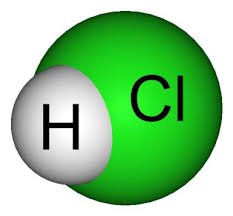Introduction
Gastrointestinal agents are the medications or substances used to treat gastrointestinal disorder. They include acidifying agents, antacids, antiemetics, laxatives, antidiarrheal and drugs for gastrointestinal motility disorders. These agents are used to treat certain conditions like achlorhydria, acidity, ulcers, nausea, vomiting, diarrhea, constipation and certain other gastrointestinal issues. In this article we will see acidifying agents like ammonium chloride and dilute hydrochloric acid.
Acidifying agents
Acidifying agents are the drugs which are used in treatment of achlorhydria and increases the acidity of stomach. Achlorhydria is a condition in which there is absence or insufficient secretion of hydrochloric acid in the stomach. The cause of achlorhydria may be subtotal gastrectomy, atrophic gastritis, carcinoma, gastric polyp, chronic nephritis, tuberculosis, hyperthyroidism and chronic alcoholism. The general symptoms are mild diarrhea or frequent bowl movement, epigastric pain and sensitivity to spicy food.
The stomach pH varies from 1 (when empty) to 6-7 (when stomach is full). The epithelial cells of gastric mucosa secrete endogenous hydrochloric acid and enzymes require for digestion. The hydrochloric acid softens fibrous food, promotes the formation of proteolytic enzyme pepsin at acidic pH (below 3-5). If due to some reasons, there is no secretion of hydrochloric acid or less secretion of hydrochloric acid, achlorhydria occurs. In the treatment of achlorhydria ammonium chloride and dilute hydrochloric acid is used.
Ammonium chloride
Molecular formula: NH4Cl
Molecular weight: 53.5
Preparation
At industrial level it is prepared by interaction of ammonia gas with hydrochloric acid. The solution is evaporated to dryness.
NH3 + HCl — > NH4Cl
During purification it is mixed with 5% calcium phosphate to prevent sublimation of any volatile iron salts.
Properties
- White or colorless
- Crystalline or coarse powder
- Almost odorless
- Saline in taste
- Slightly hygroscopic
- Soluble in water
- Sparingly soluble in alcohol
- Incpmpatible with alkalis, carbonates of alkaline earth and lead salt
Uses: It has three principal pharmacological actions and these actions are dose dependent.
- Expectorant: It acts as mild expectorant when administered in small doses. It is used in combination with ammonium carbonate in cough preparations.
- Diuretic: The diuretic effect is due to utilization of ammonium cation in conversion of urea. In this process H+ ions and Cl– ions are produced. The hydrogen ion reacts with bicarbonate and CO2, water is produced.
- Acidifier: It can be used to maintain the acid base balance in the body, particularly in cases of alkalosis. In case of achlorhydria it is used as an acidifying agent.
Assay
The assay of ammonium chloride is based on formal titration principle. The formaldehyde is added to ammonium chloride solution and titrated with standard alkali solution using ferrium ammonium sulphate as indicator.
Dose
Usual dose as systemic acidifier is 1-2gm four times a day. For expectorant action 0.3-0.5gm per day.
Storage
It is stored in tightly closed container.
Hydrochloric acid
Molecular formula: HCl
Molecular weight: 36

Preparation
It is prepared by action of sulfuric acid on sodium chloride. Both the chemicals are heated in the furnace and hydrochloric acid gas is passed in a tower which is spread with water. The acid so produced is then purified. The NaHSO4 formed in the process is mixed with more quantity of sodium chloride and heated strongly to obtain more hydrogen chloride gas.
NaCl + H2SO4 — > NaHSO4 + HCl
NaHSO4 + NaCl — > Na2SO4 + HCl
Properties
- Colorless, fumingly liquid
- Pungent odour
- Miscible with water and alcohol
- Attacks metals with evolution of hydrogen gas
Uses
Hydrochloric acid directly can not be used as medicine. It is used in the dilute form. Dilute hydrochloric acid is prepared using HCl and contains 10% w/w of HCl. Dilute hydrochloric acid is used as acidifying agent. It is employed in 5ml dose after diluting with 200ml of water in order to protect teeth from adverse effects. The diluted solution is ingested using straw.
Assay
Hydrochloric acid is titrated by alkalimetric method using sodium hydroxide as titrant and methyl orange as indicator.
Storage: It is stored in glass stoppered container at a temperature not exceeding 300C.
Summary
Acidifying agents typically refer to substances or medications that help to increase acidic medium in stomach. These agents are typically administered under the supervision of healthcare professionals and may have specific indications and side effects depending on individual medical condition and treatment goals. The commonly used acidifying agents are ammonium chloride and dilute hydrochloric acid.
For more regular updates you can visit our social media accounts,
Instagram: Follow us
Facebook: Follow us
WhatsApp: Join us
Telegram: Join us
